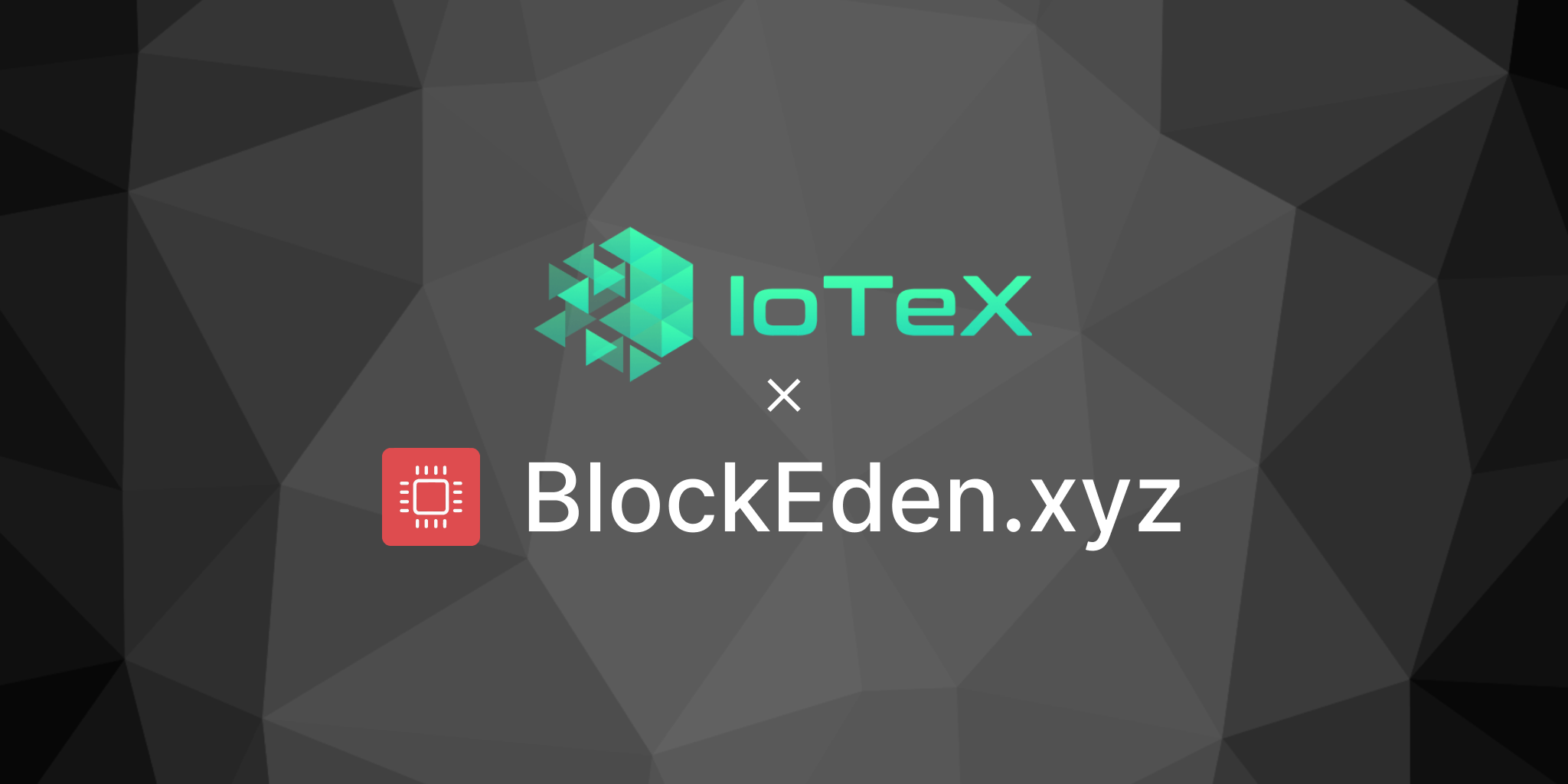IoTeX 2.0: Empoderando DePIN para Todos
La red de infraestructura física descentralizada (DePIN) está emergiendo como una fuerza transformadora en el panorama Web3, ofreciendo un nuevo paradigma para construir, operar y gestionar redes de infraestructura física. Sin embargo, muchas startups de DePIN enfrentan desafíos significativos debido a la falta de fondos y competencia técnica. IoTeX 2.0 busca abordar estos desafíos con un conjunto de innovaciones diseñadas para apoyar a la comunidad DePIN en la realización de la visión de "DePIN para Todos!".

Innovaciones clave de IoTeX 2.0
-
Diseño tokenómico:
- Una utilidad integral para los tokens IOTX dentro de la infraestructura modular DePIN.
- Recompensas de staking inflacionarias, mecanismos de quema deflacionarios e incentivos de crecimiento para mantener un suministro de tokens equilibrado.
-
Infraestructura modular DePIN:
- Modular Security Pool (MSP): Proporciona una capa de confianza unificada para los módulos de infraestructura DePIN mediante el restaking.
- W3bstream: Una red descentralizada de múltiples verificadores para la verificación DePIN, que soporta varios enfoques de pruebas de validez.
- ioID: Un sistema de identidad unificado que gestiona y asegura las relaciones máquina‑a‑máquina y máquina‑a‑persona.
- ioConnect: Un SDK embebido universal que potencia la abstracción de dispositivos y facilita la interacción con dispositivos inteligentes.
- ioDDK: Un SDK de cadena que permite a los proyectos DePIN provisionar cadenas de aplicaciones auto‑soberanas, heredando la seguridad L1 de IoTeX.
-
Bienes públicos:
- Herramientas como DePINScan y DePIN Liquidity Hub para apoyar la visibilidad, usabilidad y liquidez de los proyectos DePIN.
La importancia de DePIN
DePIN busca interrumpir industrias tradicionales y servicios públicos, que a menudo son monopolios controlados por corporaciones y gobiernos centralizados. Al aprovechar la tecnología blockchain, DePIN puede aportar transparencia, confianza e innovación a la infraestructura física y a los servicios públicos. Este nuevo modelo permite a las personas contribuir y generar valor en redes de infraestructura del mundo real, superando barreras financieras y logísticas de entrada.
El panorama DePIN
DePIN es un esfuerzo colectivo de numerosos proyectos alrededor del mundo, centrados en descentralizar y mejorar la infraestructura física. El sector DePIN incluye:
- Redes de recursos físicos: Producen recursos no fungibles que dependen de hardware localizado.
- Redes de recursos digitales: Producen mercados para recursos fungibles, basados en hardware independiente de la ubicación.
- Infraestructura y herramientas: Facilitan el crecimiento y proporcionan capacidades listas para usar en aplicaciones DePIN.
La pila tecnológica DePIN y sus desafíos
La pila tecnológica DePIN requiere una arquitectura de extremo a extremo que conecte el mundo real con la blockchain. Esto incluye capas como abstracción de hardware, conectividad, secuenciador, disponibilidad de datos, almacenamiento a largo plazo, computación off‑chain, blockchain, identidad y gobernanza. Desarrollar esta pila compleja presenta altas barreras de entrada, particularmente para mercados emergentes.
IoTeX 2.0: Un enfoque modular
IoTeX 2.0 introduce una infraestructura modular, permitiendo a los proyectos DePIN construir una pila tecnológica que se ajuste a sus necesidades específicas. Este enfoque apoya tanto a equipos grandes como pequeños al proporcionar soluciones integrales y diseñadas para propósitos específicos. Los componentes clave incluyen:
- Modular Security Pool (MSP): Garantiza confianza unificada y de extremo a extremo a través de los DIM, aprovechando activos en stake de blockchains bien establecidas.
- W3bstream: Facilita la computación descentralizada fuera de cadena con múltiples verificadores, mejorando la escalabilidad y eficiencia de las aplicaciones DePIN.
- ioID e ioConnect: Simplifican la gestión de identidad y la abstracción de hardware, respectivamente, permitiendo una integración fluida de dispositivos inteligentes en proyectos DePIN.
- ioDDK: Soporta el lanzamiento de blockchains L2 auto‑soberanas, ampliando las capacidades de los proyectos DePIN.
Perspectivas futuras
IoTeX 2.0 aspira a crear un nuevo mundo donde las redes de infraestructura física sean descentralizadas, transparentes y equitativas. Al aprovechar tecnologías de vanguardia como pruebas de conocimiento cero, IA y blockchain, IoTeX 2.0 visualiza un futuro donde dispositivos inteligentes, sistemas autónomos y mercados de recursos digitales operen de manera fluida y segura. Esta visión capacita a la gente cotidiana para contribuir y beneficiarse de la modernización de la infraestructura global, asegurando "DePIN para Todos!".
Resumen
IoTeX 2.0 es un hito significativo en la evolución de la red IoTeX, abordando los desafíos que enfrentan las startups DePIN y impulsando la próxima fase de crecimiento para las redes de infraestructura física descentralizada. Con su infraestructura modular innovadora, tokenómica integral y compromiso con los bienes públicos, IoTeX 2.0 está preparado para liderar el movimiento DePIN y empoderar a los constructores de todo el mundo. ¿Eres desarrollador de IoTeX? BlockEden.xyz ofrece RPC de IoTeX en https://blockeden.xyz/api-marketplace/iotex.


